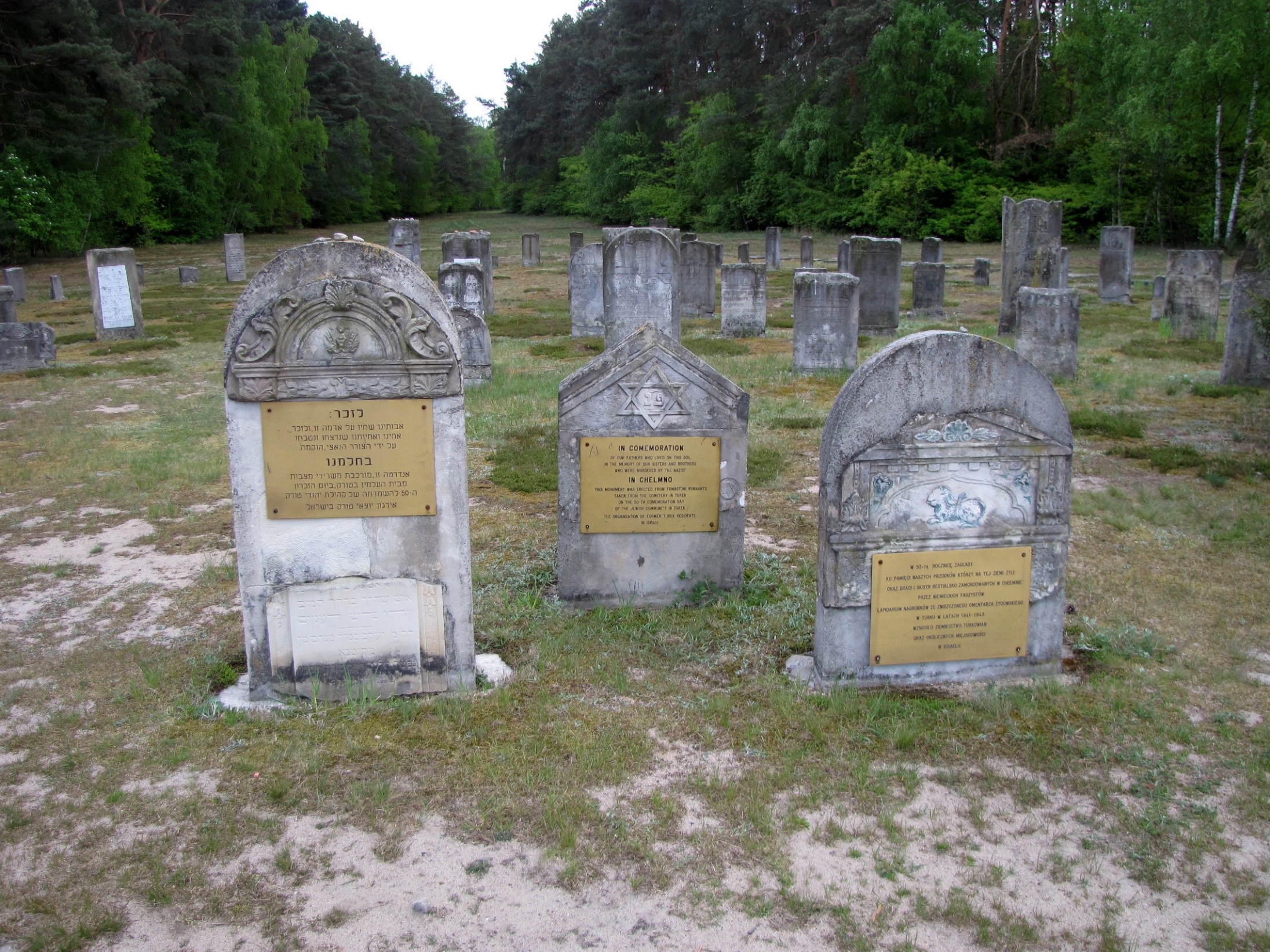
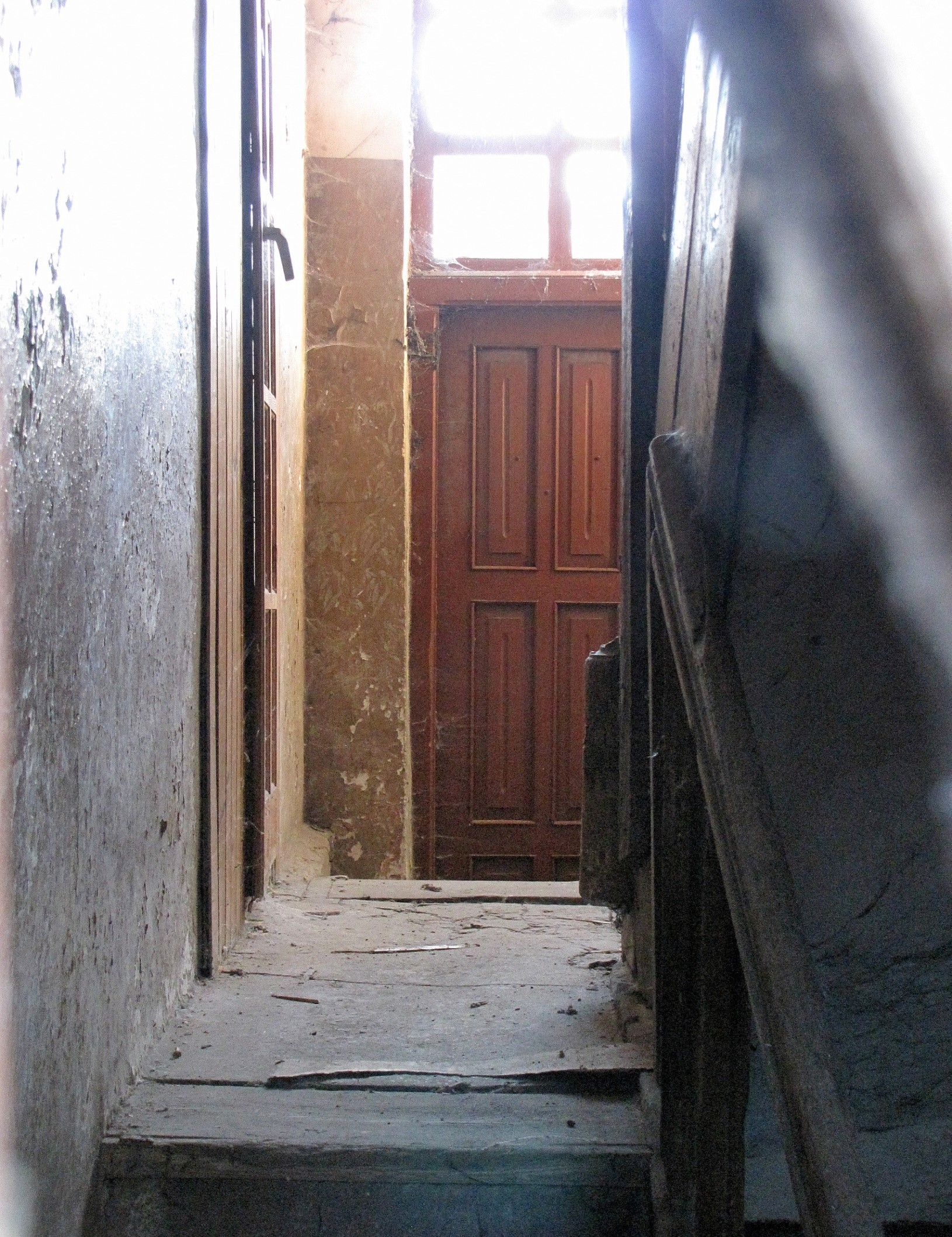
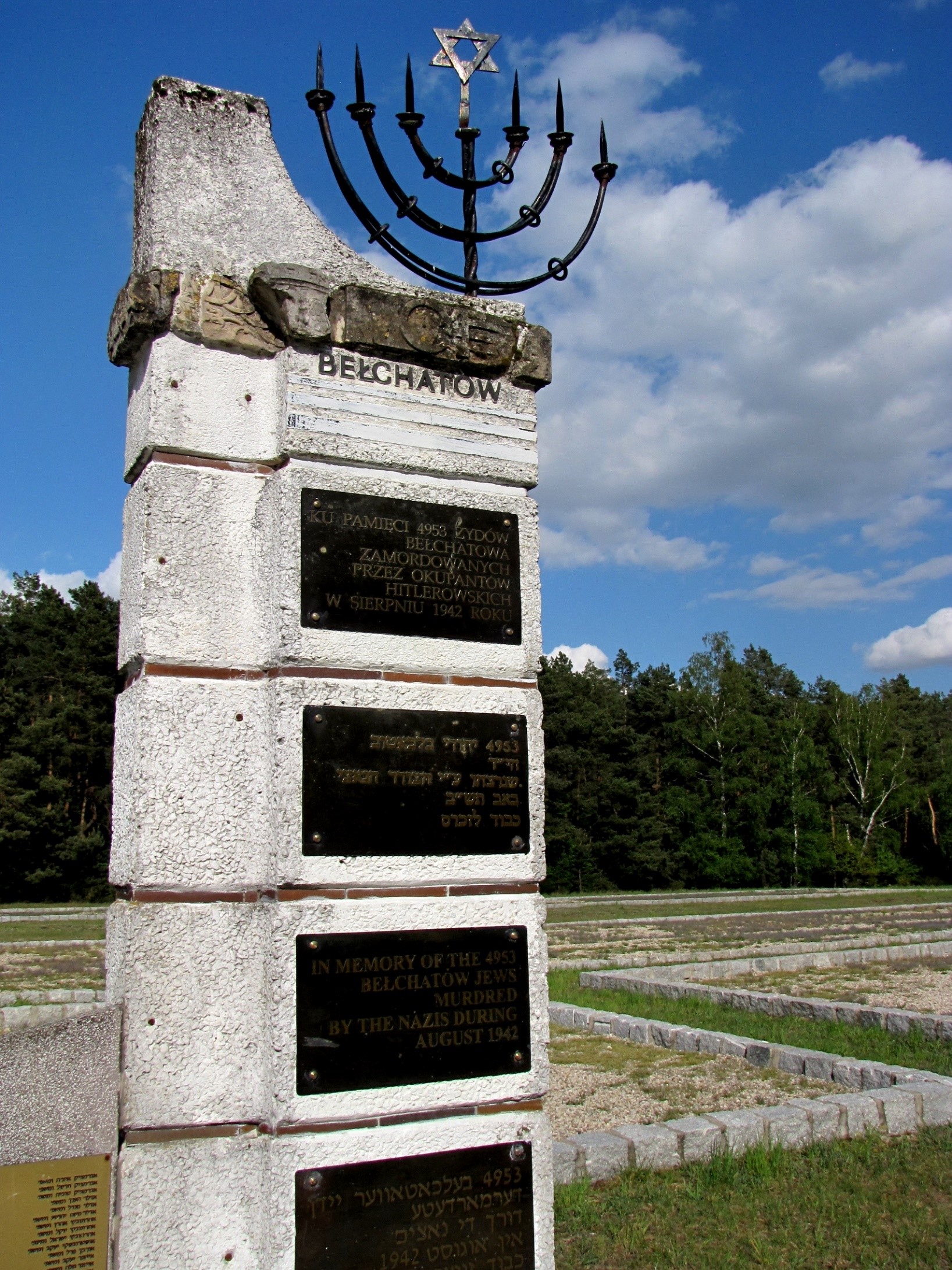
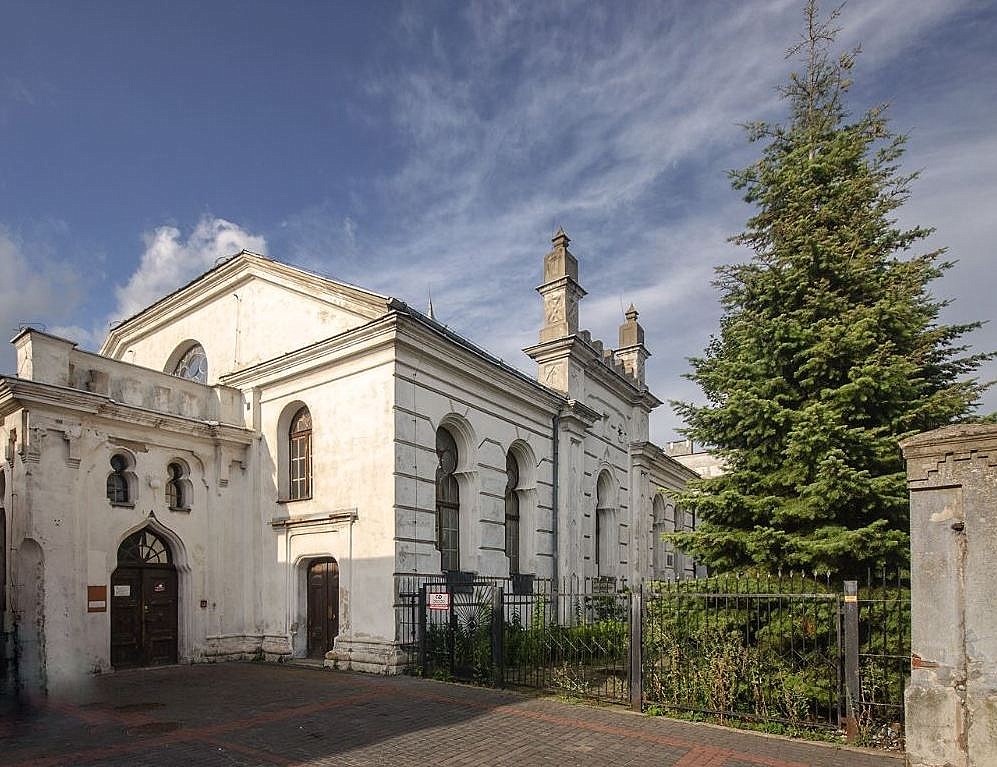
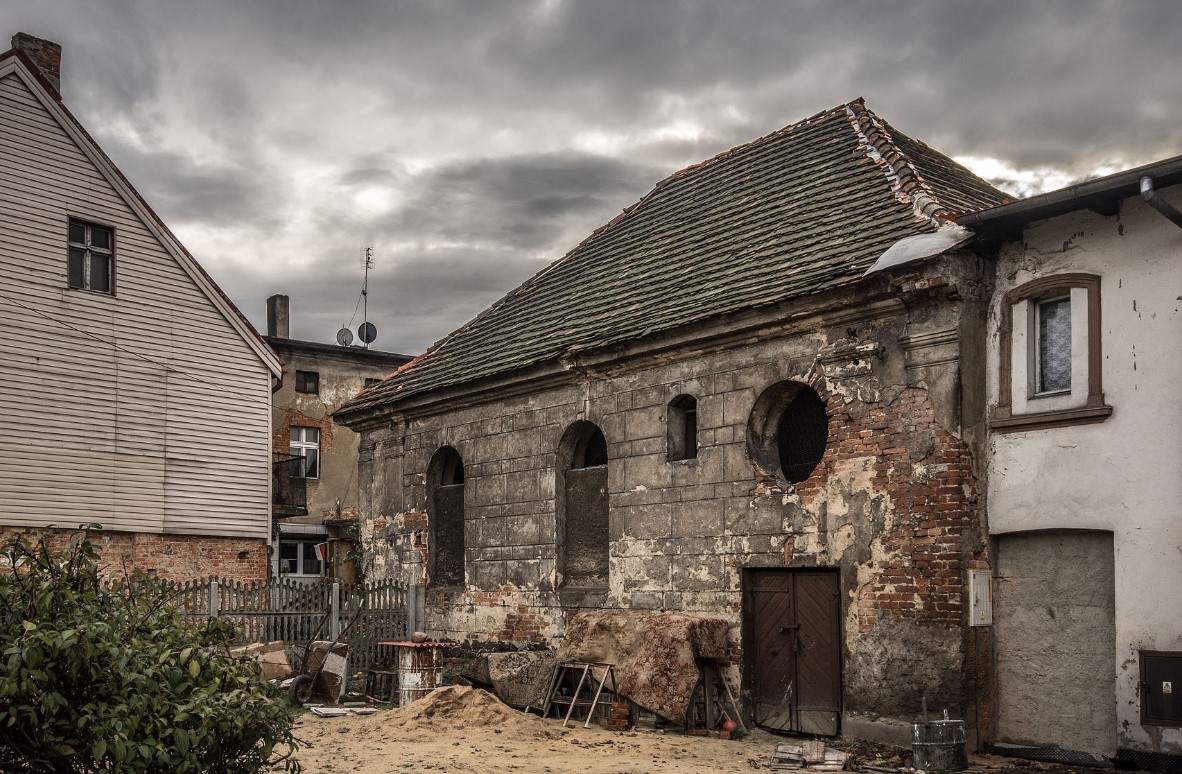
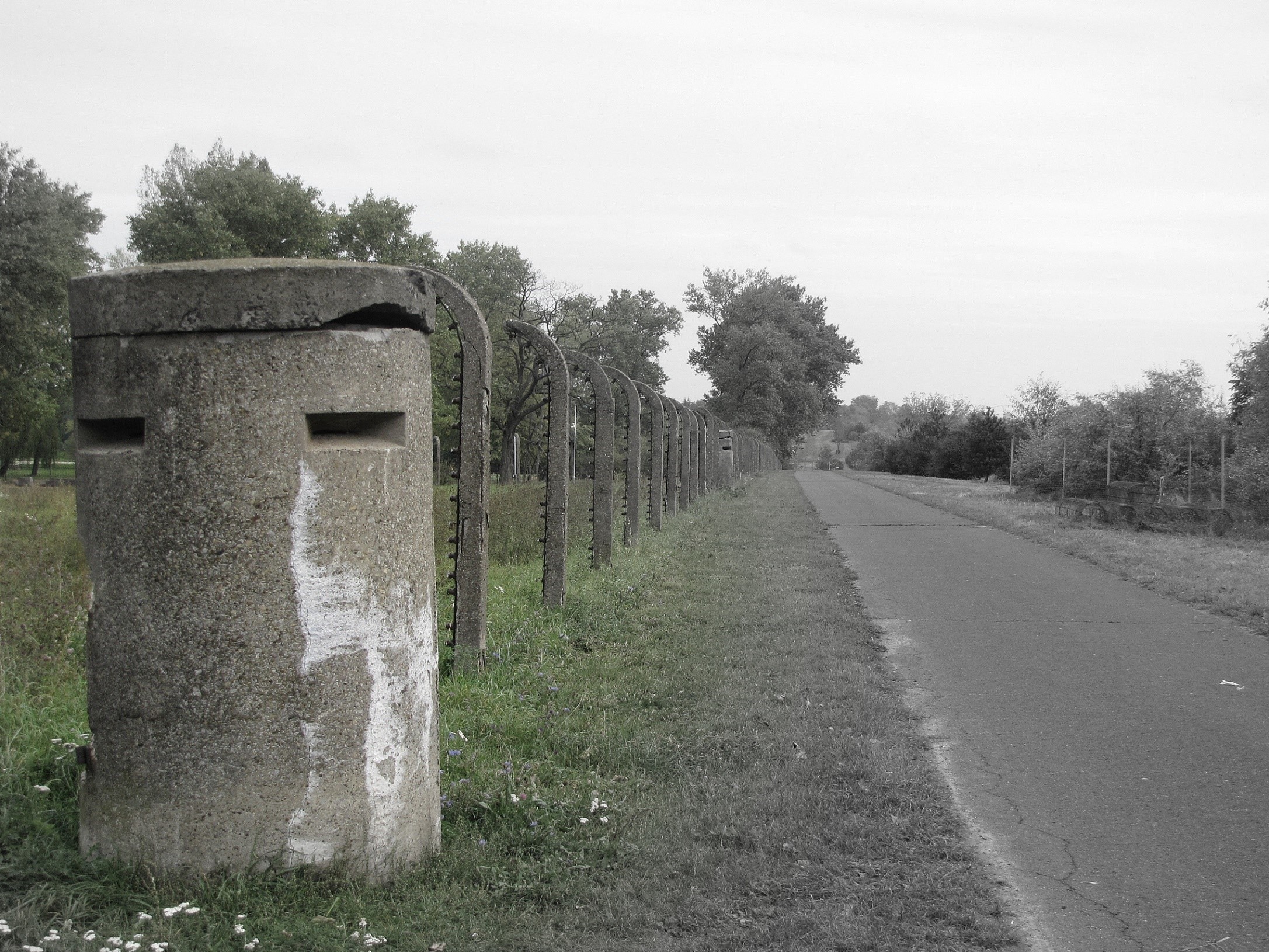
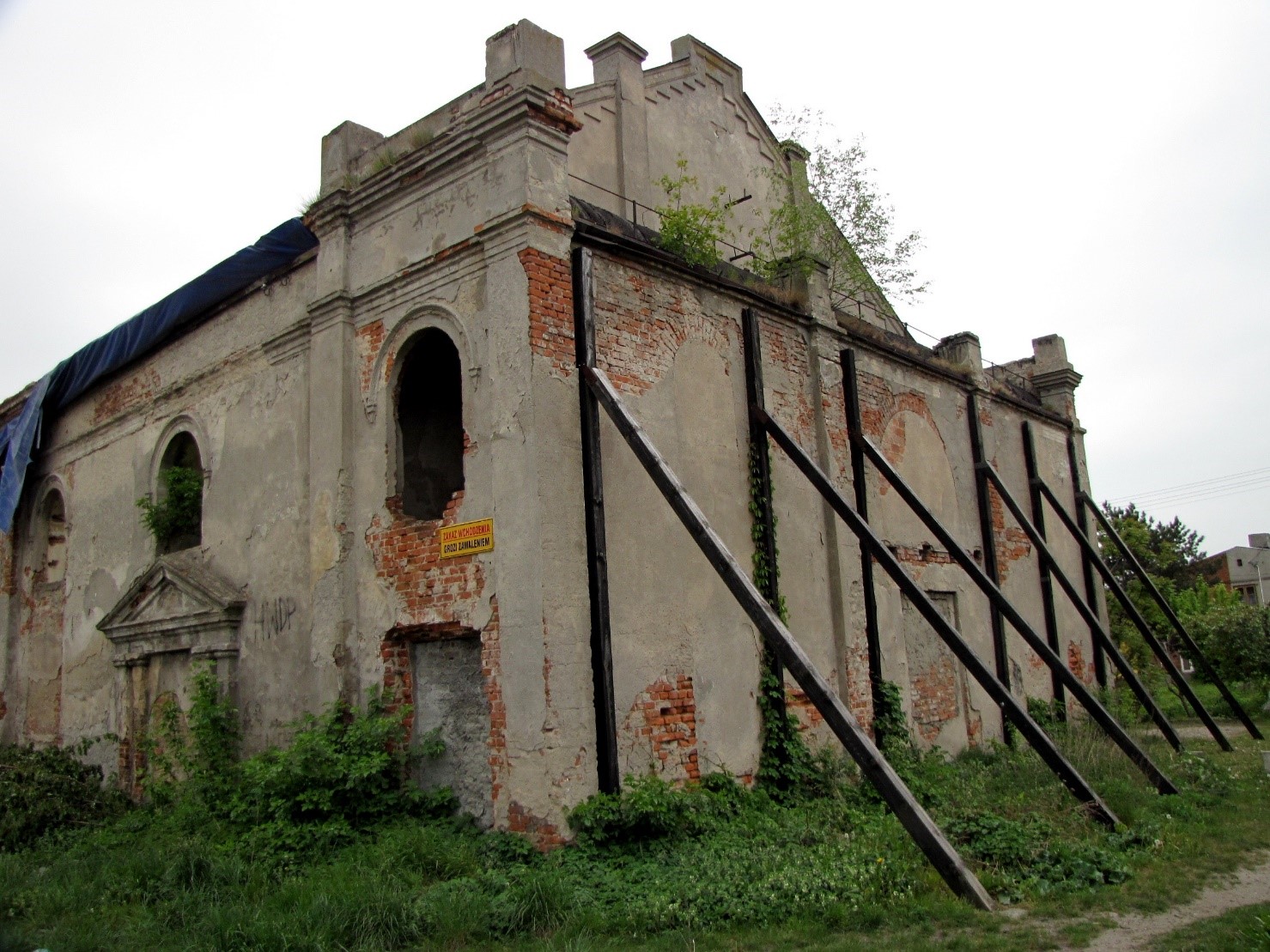
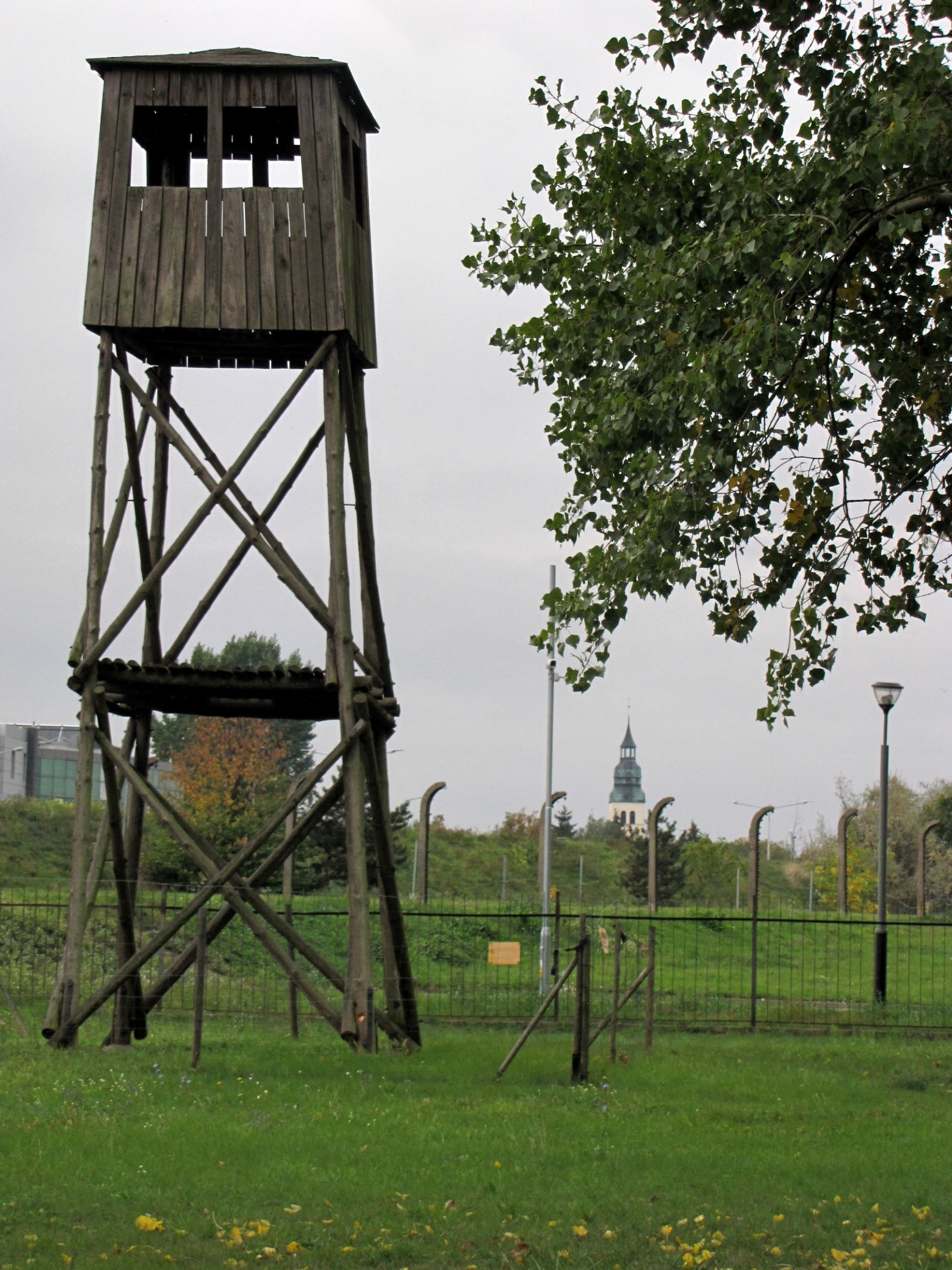
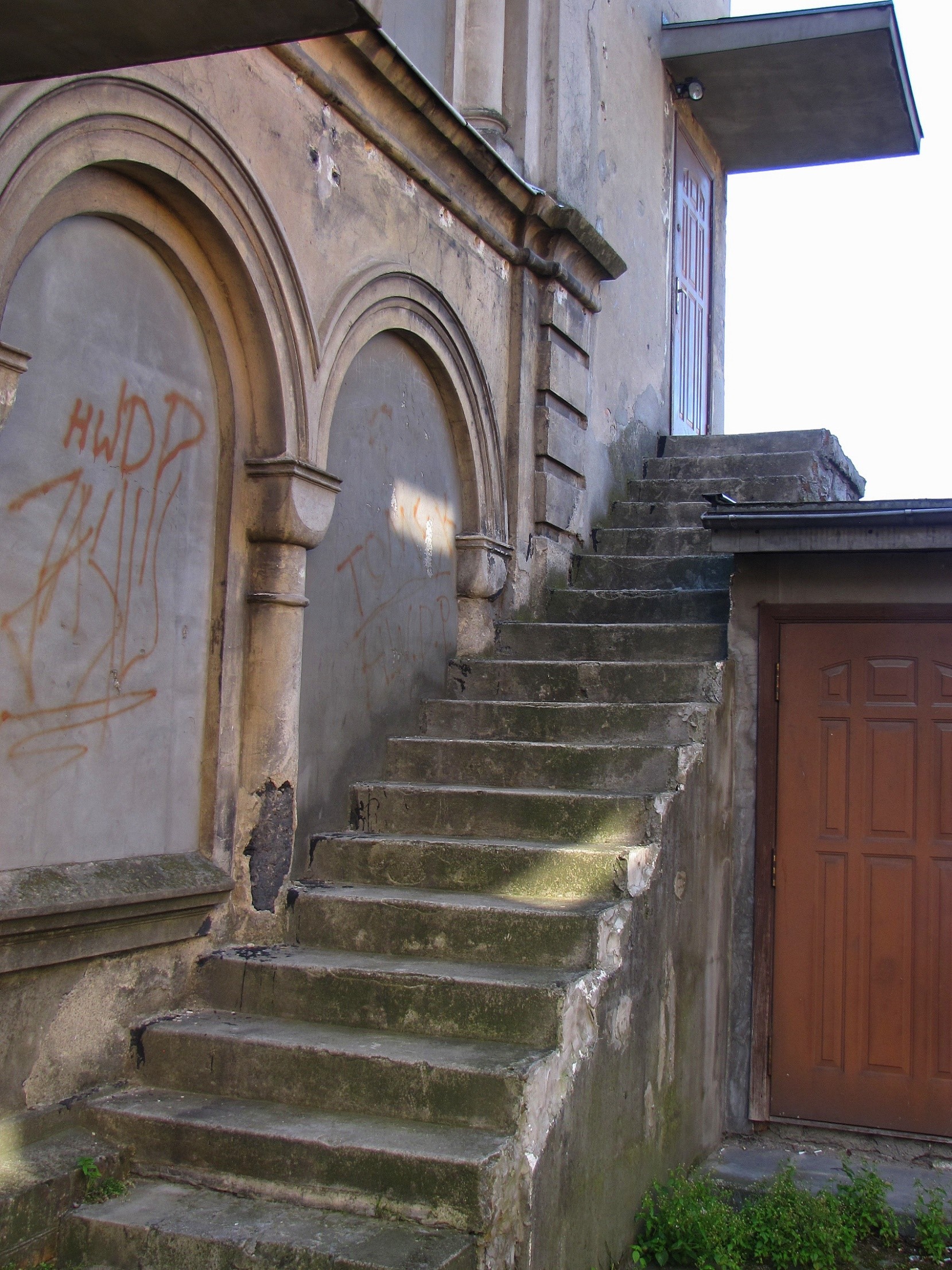
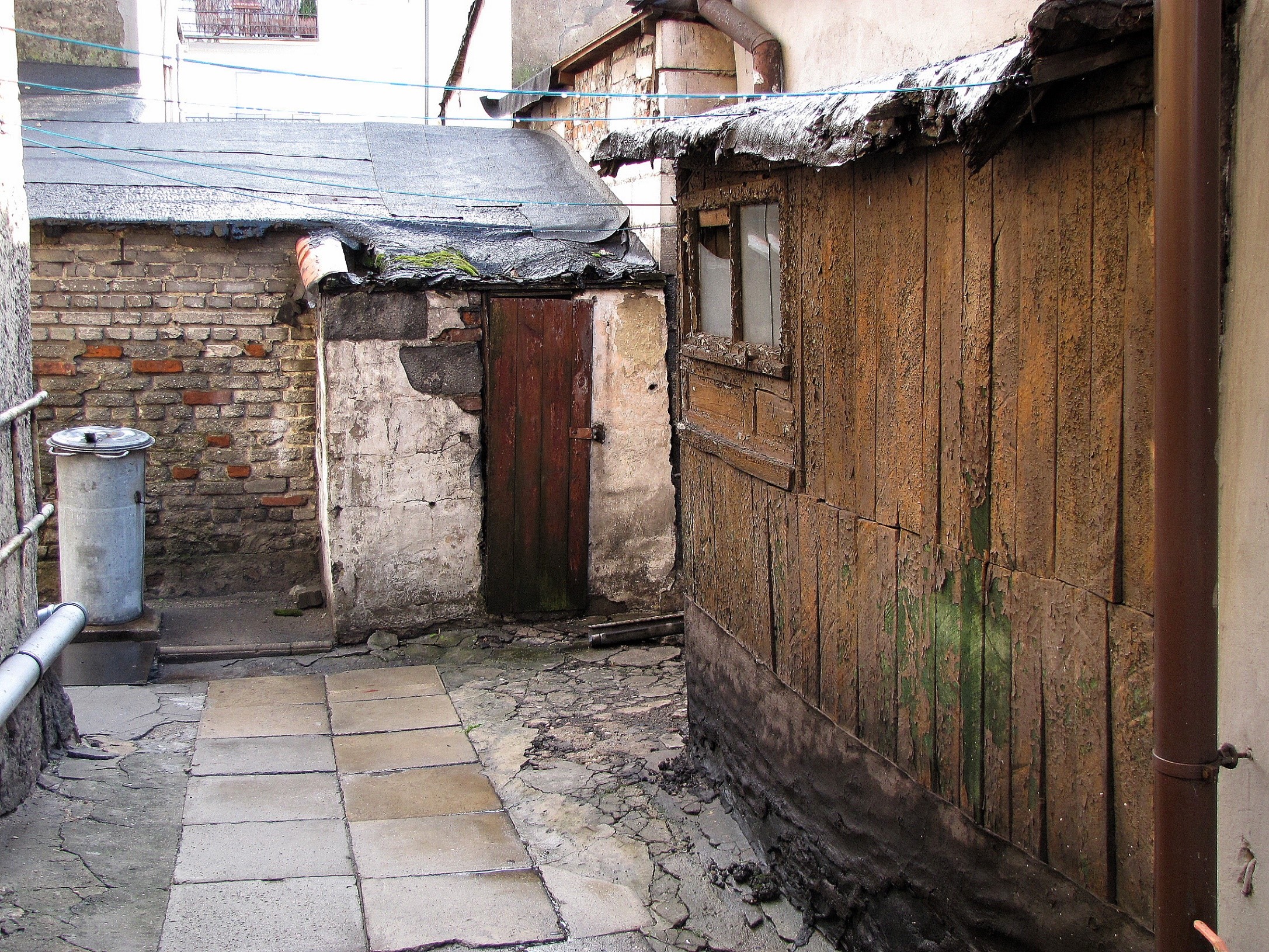
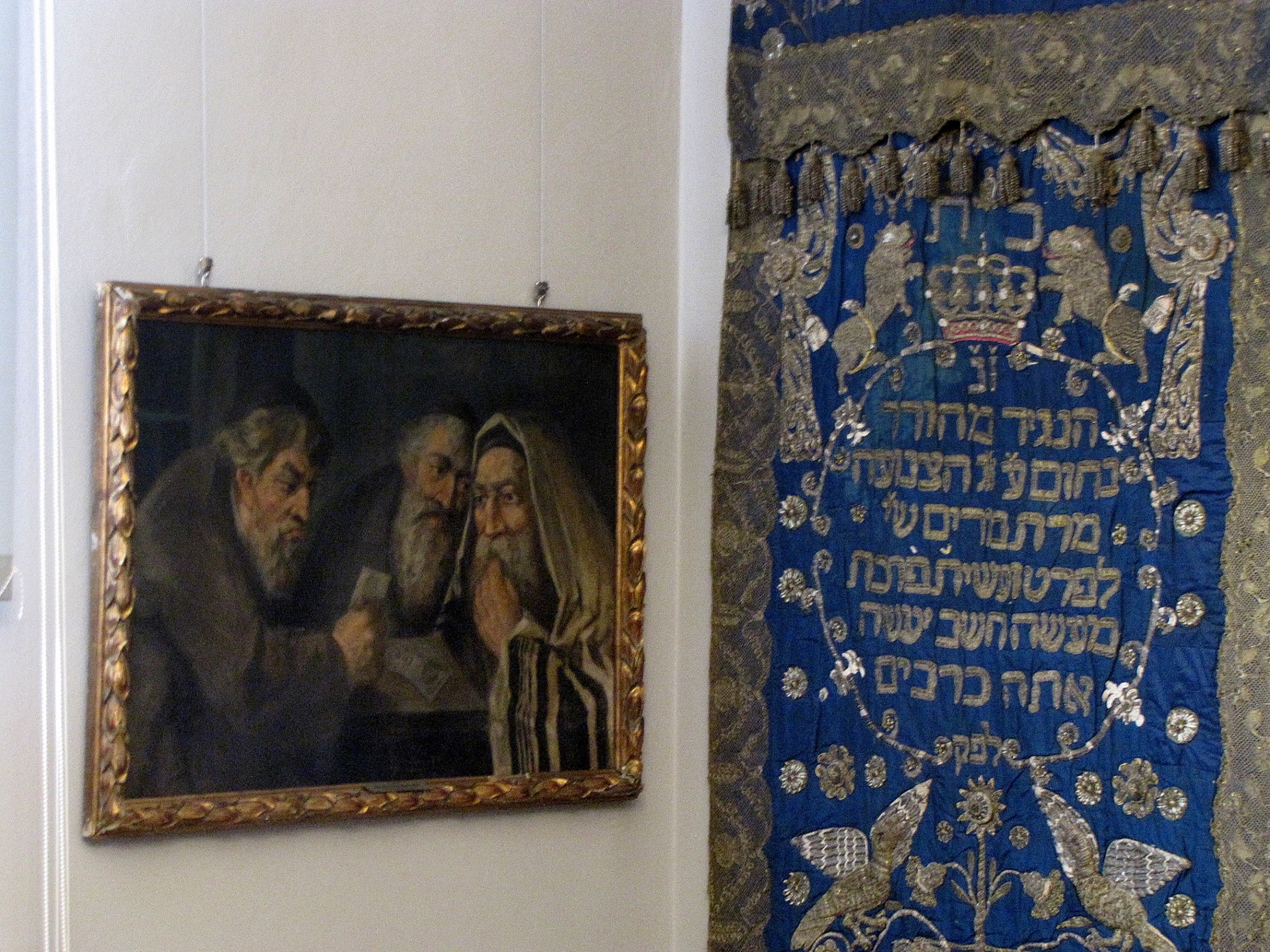
JEWISH TRACES IN POLAND: Synagogues, Cemeteries, Abandoned Places and more. Part Five - Wielkopolska & Western Poland
Coffee-table, E-Photobook -- with 424 pages, 312 of which contain single, original photos; 91 pages contain archive photos -- of Jewish sights and traces in Poland. This part covers Wielkopolska and Western Poland. The photobook has been designed with the intent to show and inform the reader what Jewish heritage sights (and sites) are still existent in this part of Poland and what they can expect to see. While not developed as a travel guide, those interested in visiting Poland will find this an invaluable resource, whether they're visiting on a heritage tour, out of historical interest, or just want to sit at home and enjoy the subject matter. The table of contents below and the portion of the book's introduction will tell you what is covered in the E-book.
You are purchasing an E-book (electronic), which has two file formats: the first file is mounted on a flip album; the second file is a .pdf for scrolled viewing. Both files will be put onto a CD to open in your desktop or laptop device (and from there, you can transfer it to an IPad, etc.). We will NOT send files via email!
BOJANOWO 8
BORNE SULINOWO 12
BRZEZINY (Bzhezhin) 21
BUK 36
BYDGOSZCZ (Bidgash) 39
BYDGOSZCZ-FORDON 50
CHELMNO 55
CHELMNO EXTERMINATION CAMP 64
DABIE 115
DEBKI 121
GNIEWKOWO 134
GRABOW 137
HOLENDRY PAPROCKIE 143
IZBICA KUJAWSKA (Izbice Kujawska) 150
JARACZEWO 157
JAROCIN 162
KEPNO 168
KLECZEW 180
KONIN 182
KORONOWO 191
LESZNO 205
LUBRANIEC (Librants) 227
LUTUTOW (Lututub) 232
MIEDZYRZECZ 238
ODOLANOW 240
OSIECINY (Ashentshin) 246
OSJAKOW 251
OSTROW WIELKOPOLSKI 253
PELCZYCE 264
PNIEWO (Ostwall Museum) 272
PLESZEW 294
POZNAN (Foyzn) 302
SIERADZ 340
SIERAKOW 348
SLUPCA (Sluftsh) 355
SOMPOLNO (Sumfulna) 359
SZCZECIN 366
WIERZBNO 372
ZABIKOWO CONCENTRATION CAMP 377
ZARY 405
ZYCHLIN 411
Generally speaking, Jewish settlement in the western parts of Poland, which had a long Germanic history, was sparse. Part of this had to do with the agricultural nature of western Poland; part with Prussian policies which effectively and severely limited the settlement of Jews. When I speak of these “western parts”, I speak of those areas traditionally known as Pomerania and West Prussia and referred to in Poland as “the recovered territories”. But even in Wielkopolska (Greater Poland) --- which remained steadfastly Polish, even under occupation --- Jewish settlement got thicker the closer you moved toward Lodz; the further west you headed, the fewer Jews you encountered. And thus, even though this part reveals forty-one different locations, very much spread out from the environs of Lodz to the very borders of modern-day Poland at Szczecin, the history and traces of Jews in this region tend to be sparser than in other parts of Poland. Another reason for this is because much of the territory covered in this part was annexed to the Third Reich and the Germans took great pains to obliterate any signs of the Jews’ past existence in their new Warthegau and Westpreussen. So intent were the new masters on removing them as quickly as possible, that Jews in the villages and ghettos radiating out from Lodz had the dubious honor of being the first to be gassed in the Final Solution. This took place not in the stationary gas chambers of the Aktion Reinhard camps, but in the mobile gas vans in Chelmon, to which the Jews were sent. Once the efficiency of the gas vans had been tested out on the Jews of these small towns, starting the day after the attack on Pearl Harbor and continuing almost daily until late January 1942, it was the turn of the Jews in the Lodz Ghetto.
As I’ve said in previous parts of this book, this doesn’t mean avoiding some of western Poland’s most beautiful countryside, which contains other historically interesting sites, some of them covered in these pages. With that in mind, I welcome you to the fifth part of Jewish Traces in Poland, this time covering the areas known as Wielkopolska (Greater Poland) and Western Poland.
It is with great pride of accomplishment that I introduce this self-published work about Jewish sites and traces within the borders of modern-day Poland. I state, with no arrogance intended, that it’s a work much-needed. For those intending to travel to Poland in search of their Jewish roots, or those interested in Jewish heritage (and I’ve met many who aren’t Jewish at all), or even those who will sit at home and read this out of personal and interest, this work will most likely be the most comprehensive “coffee-table” photobook in print on the subject at hand (with the exception of those “must-see” places like Auschwitz and Krakow, which, comparatively speaking, I give short shrift to since they’re so well known). In fact, through my own personal interest and needs, I found few works updated more recently than ten years ago. Since the sights associated with Polish Jewry have mostly remained unchanged since the Holocaust, one might wonder why an “updated” photobook is even necessary. My own research on the ground illustrated all too clearly why: in many places, sites and traces of the former Jewish community have since vanished, been torn down, fallen into complete disrepair, or have been renovated or replaced in the name of “progress”. While Poland, perhaps more than any other country in Eastern Europe, has expended great efforts and sums of money to maintain many of the sites you will see in this work, I still couldn’t help feeling disappointment and sadness at discovering such historically important relics gone once I reached my destinations.
This huge book, divided into a number of parts to make reading easier, is meant, in its purest form, to be a photobook. Not a scholarly work and not a travel guide (though I hope it helps those interested in traveling to know what to expect and maybe even give them destination ideas they hadn’t considered before). There are no directions or addresses given and that’s on purpose. I don’t want this to be considered a travel guide. It’s also not an apologetic for Poles or Jews. Though I give a brief historical outline for each location, I have tried to keep the description as neutral as possible and devoid of my personal opinions. This is not cowardice or political correctness: I didn’t put this work together to argue my beliefs or proselytize others. Let each person draw their own opinions and conclusions from my work.
While the number of pages for each part itself may be off-putting, I defend the length by the fact that they are mostly photos and each photo got one whole page. This work consists of my original photography and archive pictures in the public domain (to the best of my knowledge in my research). Almost all the photos are from 2019; where my photos aren’t, I put a date on them (likewise for archival sources). Most of my older pictures don’t meet my obsessive standards of today, so most of them didn’t “make the cut”. There may be cases where “questionable” pictures are included. “Questionable” means describing something that may not be obvious, such as a house which I claim to be formerly Jewish. The reader should be aware that in all cases, if I was not able to determine beforehand information as to what I was photographing, I consulted locals --- sometimes multiple locals --- to verify my suspicions. Often, the information came to me from onlookers who gauged my interest in what I was aiming my camera at rather than my asking them. If there are errors, they aren’t mine alone.
I also have a number of places in this book that have absolutely nothing at all to do with Jewish history. I include them, because I think they’re interesting and because a break from the subject matter would probably be welcome after a while. Unfortunately, while those interested in Polish genealogy have plenty of different places they can go to in Poland to see the past come alive in so many ways, this is usually not the case for Jews. The Jewish past is, for the most part, dead in Poland. Jewish heritage travel has the dubious distinction of not only having to rely on imagination, but to suffer visits to dead synagogues, graveyards, extermination camps and other sites that have something “ghostly” or haunted about them. Visiting other places in Poland and taking a break from the often oppressive history of Polish Jewry was something I needed to do for my own sanity.




